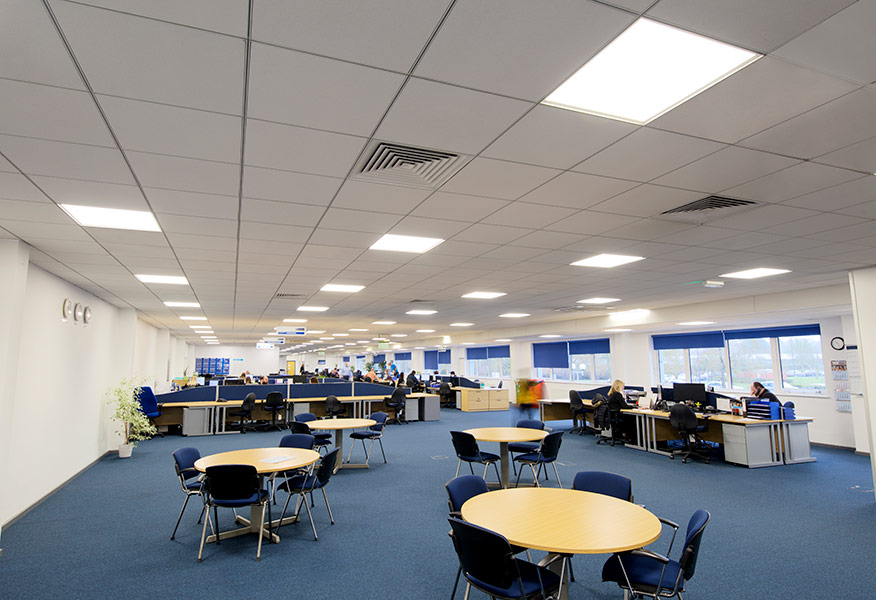
A recent survey conducted by totallymoney.com showed British employees work more than 10 hours overtime every week on average, clocking up 469 hours of extra work a year. With many of us adding this on to a full time week of around 40 hours, the simple truth is, most people spend the large majority of their daylight hours in the workplace and their health and wellbeing can be heavily affected.
It may seem surprising that while energy efficiency has long been a key factor in specifying workplace lighting, less attention had been paid to the effects of lighting on staff health. This is changing and the question is how to improve lighting from a well-being point of view and achieve positive business results. The WELL Building Standard, launched in 2014, sets evidence-based performance requirements in seven concepts – air, water, nourishment, light, fitness, comfort and mind.
The next steps
A connected, holistic solution lies in carefully balancing natural light availability with the tasks that employees need to carry out, available budgets and the building's infrastructure.
Daylight management, active ambient lighting systems, automated shading and dimming, and circadian Lighting are just some of the options WELL lays out.
‘Daylighting’ and circadian lighting
Daylighting is the practice of placing windows or other openings and reflective surfaces so that natural daylight provides effective internal lighting. According to the WELL Standard, 'Exposure to natural light can improve occupant mood, alertness and overall health. Ideal lighting involves proper exposure to diffuse daylight, as well as careful design of windows and glazing to avoid excessive glare and heat gain.' Where artificial lighting is required, it should correspond to natural daylight.

Another is circadian lighting, which is about ensuring that lighting is designed to match circadian rhythms – a 24 hours cycle which synchronises bodily functions in humans and animals – and which responds to a number of external cues, including light. Circadian rhythms can influence a number of important biological functions, including alertness, digestion, sleep and hormone release – factors that can greatly impact on an individual’s health, wellbeing, and ultimately workplace productivity.
Does it work?
The 2016 World Green Building Council report on the business case for wellbeing and productivity in green offices, illustrated the clear and positive benefits to the business of having a human centric health and wellbeing approach to their workplaces.
The report includes examples such as, Skanska UK reported a saving of £28,000 in 2015 in absenteeism costs and increased employee comfort and satisfaction. In addition Saint-Gobain call centre staff in their North American headquarters achieved a 97% increase in sales-generated leads and 101% increase in leads per call since moving into their new building.
Evidence gathered shows the benefits that stem from better buildings with a human-centric focus are significant: reduced sick days, better productivity, happier people, increased profit, and longer employee retention; all resulting from more holistic approaches to lighting.
Tamlite’s expert design and technical teams are available to advise business owners through the process of achieving improved lighting, health and productivity.
You can read more about Tamlite's commitment to wellbeing here.